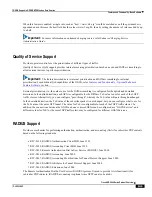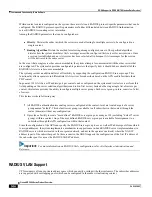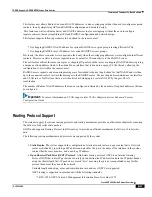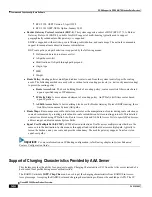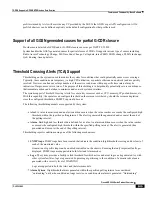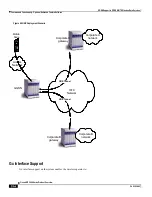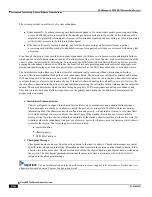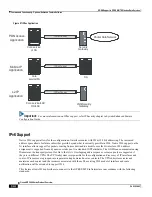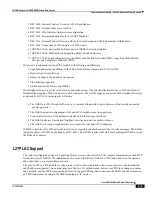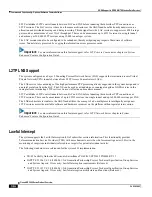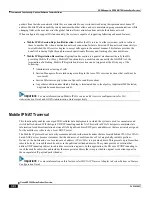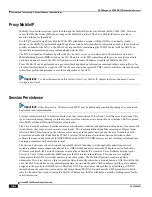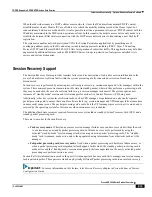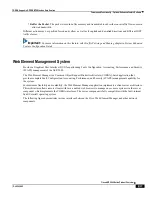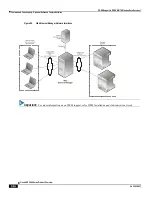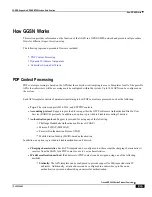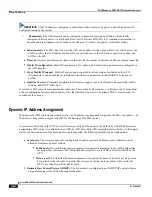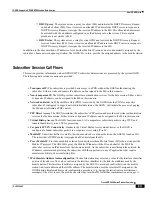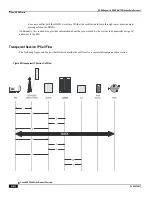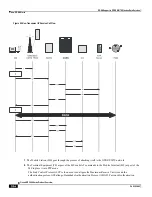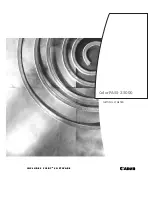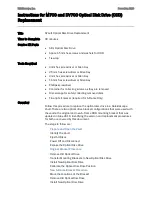
GGSN Support in GPRS/UMTS Wireless Data Services
Features and Functionality - Optional Enhanced Feature Software ▀
Cisco ASR 5000 Series Product Overview ▄
OL-22938-02
RFC 2460: Internet Protocol, Version 6 (IPv6) Specification
RFC 2461: Neighbor Discovery for IPv6
RFC 2462: IPv6 Stateless Address Autoconfiguration
RFC 3314: Recommendations for IPv6 in 3GPP Standards
RFC 3316: Internet Protocol Version 6 (IPv6) for Some Second and Third Generation Cellular Hosts
RFC 3056: Connection of IPv6 domains via IPv4 clouds
3GPP TS 23.060: General Packet Radio Service (GPRS) Service description
3GPP TS 27.060: Mobile Station Supporting Packet Switched Services
3GPP TS 29.061: Interworking between the Public Land Mobile Network (PLMN) supporting Packet Based
Services and Packet Data Networks (PDN)
IP version 6 is enhanced version of IP version 4 with following modifications:
Expanded addressing capabilities with 128 bit for address as compared to 32 bits in IPv4.
Header format simplification
Improved support of extensions and options
Flow labeling capability
Authentication and Privacy capabilities
IPv6 Neighbor Discovery protocol is used to dynamically discover the directly attached devices on IPv6 Interfaces. It
facilitates the mapping of MAC addresses to IPv6 Addresses. The GGSN supports a subset of IPv6 Neighbor Discovery
as defined by RFC 2461, including the following:
The GGSN uses IPv6 Neighbor Discovery to learn the Ethernet link-layer addresses of the directly connected
next-hop gateway.
The GGSN supports configuration of the static IPv6 neighbor (next-hop gateway).
Link-local addresses will be automatically added to Ethernet type interfaces.
The GGSN performs Unsolicited Neighbor Advertisement on line card switchover.
The GGSN will reply to neighbor discovery requests for the node's IPv6 addresses.
ICMPv6 is a protocol for IPv6 networks to allow error reporting and check connectivity via echo messages. The GGSN
supports a subset of ICMPv6 as defined by [RFC-4443]. The GGSN replies to the link-local, configured IP address, and
the all-hosts IP address.
L2TP LAC Support
The system configured as a Layer 2 Tunneling Protocol Access Concentrator (LAC) enables communication with L2TP
Network Servers (LNSs) for the establishment of secure Virtual Private Network (VPN) tunnels between the operator
and a subscriber's corporate or home network.
The use of L2TP in VPN networks is often used as it allows the corporation to have more control over authentication
and IP address assignment. An operator may do a first level of authentication, however use PPP to exchange user name
and password, and use IPCP to request an address. To support PPP negotiation between the GGSN and the corporation,
an L2TP tunnel must be setup in the GGSN running a LAC service.
Содержание ASR 5000 Series
Страница 1: ......
Страница 26: ......
Страница 48: ...New In Release 10 0 SCM Features Cisco ASR 5000 Series Product Overview OL 22938 02 ...
Страница 50: ......
Страница 58: ......
Страница 67: ...Product Service and Feature Licenses Default Licenses Cisco ASR 5000 Series Product Overview OL 22938 02 ...
Страница 68: ......
Страница 126: ......
Страница 138: ......
Страница 146: ......
Страница 218: ......
Страница 236: ......
Страница 356: ......
Страница 374: ......
Страница 422: ......
Страница 496: ......
Страница 572: ......
Страница 654: ......
Страница 700: ......
Страница 726: ......
Страница 784: ......
Страница 816: ......
Страница 839: ...Network Address Translation Overview How NAT Works Cisco ASR 5000 Series Product Overview OL 22938 02 ...
Страница 841: ...Network Address Translation Overview How NAT Works Cisco ASR 5000 Series Product Overview OL 22938 02 ...
Страница 844: ......
Страница 906: ......
Страница 926: ......
Страница 942: ......
Страница 943: ...Cisco ASR 5000 Series Product Overview OL 22938 02 Chapter 30 Technical Specifications ...
Страница 966: ......
Страница 967: ...Cisco ASR 5000 Series Product Overview OL 22938 02 Chapter 31 Safety Electrical and Environmental Certifications ...
Страница 972: ......

